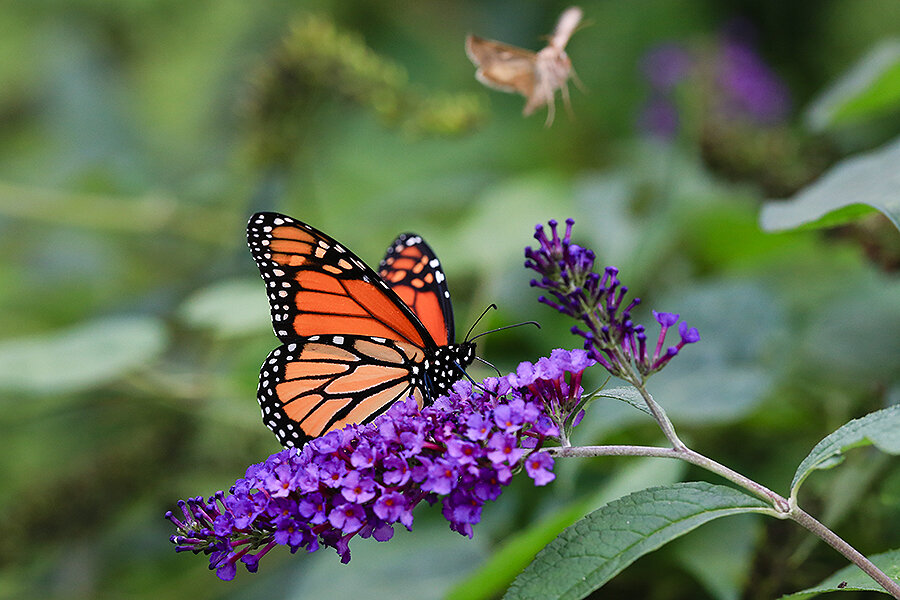Can monarchs make a comeback?
Loading...
Have monarch butterflies been decimated? “Devastated” is more like it: According to the US Fish and Wildlife Service, 90 percent of the iconic species has disappeared in just a quarter of a century. But a new $10 million venture between the National Fish and Wildlife Foundation (NFWF) and state partners promises to protect butterfly habitats, helping flutters of monarchs make their breathtaking, 3,000-mile migration for years to come.
On Monday, the NFWF awarded $3.3 million in grants to recipients in 14 states along the “butterfly highway” between their US summer habitats and winter forests in Mexico. The Foundation’s partners will match the gift with $6.7 million, funds that will go toward improving habitat health along their migratory route – much of which overlaps with human highway I-35.
For an animal that makes such an arduous journey each year, monarch caterpillars are inconveniently picky eaters: Only the milkweed plant will do. Milkweed also serves as the monarch nursery, as newborns store up energy to weave cocoons and undergo metamorphosis into their more elegant adult selves. In fact, the orange-and-black designs that humans find so beautiful are actually poisonous, warding off butterfly predators, and monarchs owe them to the milkweed flower’s unique toxins.
But for most Americans, “milkweed” is just that: a weed. Pesticides and other agricultural practices have shrunk monarchs’ natural habitat for years, and some environmentalists have especially stern words for agrochemical king Monsanto, the company that produces Roundup herbicide, and even “Roundup Ready” crops with pesticide engineered right into them.
In June, the Environmental Protection Agency announced a five-year study on glyphosate, a key ingredient in Roundup, and its impact on endangered species, including monarchs. Not all advocates were appeased. “The EPA apparently plans to study the monarch migration to extinction,” Natural Resources Defense Council scientist Dr. Sylvia Fallon said in a press release, calling the delay for tougher actions “inexcusable.”
But Monsanto seems eager to make amends. The company, which has a market cap of $55.7 billion, is reviled by some environmental and anti-GMO activists as “the agriculture world’s prince of darkness,” but has launched what Politico writer Jenny Hopkinson called a “charm offensive” in recent years, including dedicating millions “to sell the public on GMOs.”
Of the NFWF’s $3.3 million total, $1.2 million was donated by Monsanto, which is based in St. Louis, Missouri, a self-declared monarch sanctuary. Over the past year, Monsanto has committed nearly $4 million to monarch causes.
Between corporate donations, government grants, and efforts “to grow milkweed like crazy,” perhaps there’s hope for the species’ remaining 30 million. This month, the migratory generation takes off on their epic journey, turning the skies into a “kaleidoscope” of brightly-colored wings: one word, in fact, for a group of butterflies.








